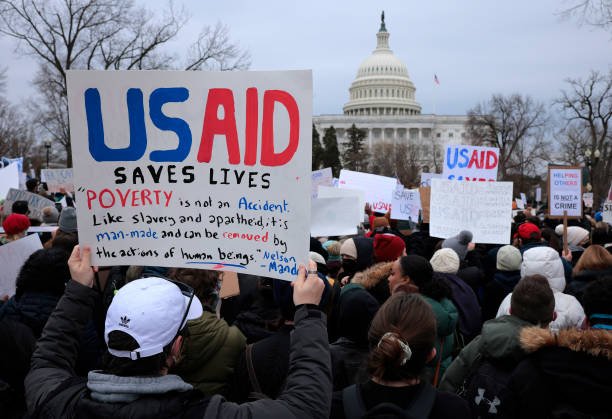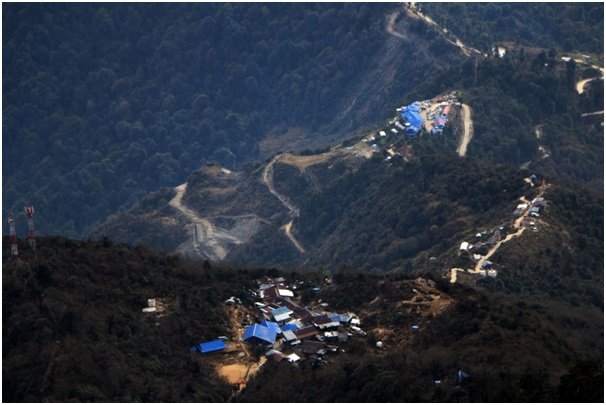In The Light of Global Backdrop, Food Security Engulfing Nepal

What’s the one thing that we all have in common? It’s food. We need it. We enjoy it. Food is something that unites us all. We rely on it for sustenance, take pleasure in its flavors, and it has the power to bring people together. However, accessing affordable and nutritious food is becoming increasingly challenging worldwide, leading to a global food crisis. This crisis is unparalleled, fueled by factors such as war, inflation, and climate change. The already high price of food, fertilizers, and fuel have been further exacerbated, pushing millions more people into extreme poverty. The consequences of this crisis are far-reaching, amplifying hunger and malnutrition, jeopardizing hard-earned development progress, and creating an unprecedented global humanitarian crisis.
David Beasley, The Executive Director of the World Food Programme (WFP), emphasizes that the current perfect storm has made food pricing the primary issue, resulting in an availability crisis this year. Shockingly, The United Nations reports that 345 million people are currently experiencing hunger at a crisis level. The economic repercussions of the pandemic have played a significant role in driving hunger to unprecedented levels. Simultaneously, the devastating effects of climate-related disasters continue to claim lives, destroy crops, and disrupt livelihoods, making it even more challenging for people to feed themselves. Additionally, conflicts persist, wreaking havoc on everyday life. Presently, violence-affected regions account for 60% of global hunger. Ukraine, for instance, used to export enough food exports ceased, trapping essential commodities like wheat and corn within the country. The impacts of this crisis are already evident, with higher food prices already elevated, exacerbating the situation further. This vicious cycle poses potentially catastrophic consequences, affecting every corner of the globe.
Even developed nations like the United States and Britain are not immune to the rising costs of food and energy. In the US, these costs have contributed to the highest inflation rates since 1981, while in Britain, food prices are increasing at a rate unseen in 13 years. The situation is even direr for net food and fuel-importing countries.
Nepal is also experiencing the impacts of this crisis firsthand. Rising fuel prices, increased agricultural input costs, and higher prices for food commodities have all taken their toll. The effects are particularly harsh on impoverished and rural households, leading to heightened inequality within Nepal. However, all households are adversely affected by these crises. The decrease in household consumption exacerbates poverty, especially in rural areas. Many households heavily rely on fuel for daily activities like cooking and heating, and they often need to purchase agricultural inputs such as fertilizer and seeds to produce food. The rising prices of these items make it increasingly difficult for them to make ends meet, especially if they are already living in poverty. Furthermore, higher food prices widen the gap between household consumption levels and the requirements for a healthy diet. As prices increase, households are forced to reduce their purchases, resulting in less nutritious options as healthier alternatives tend to be more expensive. While the global crisis may cause a modest economic slowdown in Nepal, its adverse impacts on poverty and food security are expected to be more pronounced, particularly in rural areas. This is because global food affected a significant portion of Nepal’s rural population relies heavily on agriculture for their livelihoods. With the global crisis reducing demand for agricultural products, farmers are likely to experience decreased income, leading to increased poverty and food insecurity. These challenges are prominent issues in Nepal.
This shortage of commodities is further exacerbated by major countries implementing export bans, thereby restricting the global food supply. Countries with available supplies are becoming more inward-focused. Unfortunately, one of the unfortunate measures being taken is protectionism, including export controls and stockpiling. Following the occurrence of severe heat waves in 2022, India implemented a ban on wheat exports. The quest to search for alternatives i.e. mainly rice could possibly lead to an increase in the cost of staple food Rice, as Wheat become scarce. Currently, a total of 23 countries have imposed restrictions on food exports. However, these measures may prove to be detrimental rather than beneficial. It has been repeatedly demonstrated that such export bans do not provide a solution within the country implementing them, nor do they benefit other countries.
Export bans can exacerbate the issue of rising prices. Farmers may choose to hoard their products until the ban is lifted or even switch to cultivating different crops. As a result, domestic supply is further reduced, leading to increased prices. While it is understandable to sympathize with countries implementing export bans, the consequences are potentially much higher prices for everyone else. Consequently, the challenges faced by the world’s poorest nations are likely to intensify. Experts consistently caution against a global food system that relies heavily on a small number of countries for key commodities such as corn, rice, and soybeans. Any shocks experienced by these countries, whether due to climate, have far-reaching consequences worldwide.
This situation is exacerbated by inadequate storage facilities, which causes significant post-harvest crop loss. This not only lowers farmer incomes but also increases food insecurity among the general populace. However, well-facilitated storage can be game-changing to curb food waste and restrain freshness for a longer duration. This will not only benefit the people of Nepal by providing them with a more reliable and extended supply of food, but it will also help the country cut down on its food-related expenses. Similarly, naturally well-adapted heirloom crop varieties selection could be crucial to create resilient crops that are better suited to changing conditions and thus help farmer sustain their livelihood. In the current situation, where many farmers are scrambling to produce rice and wheat, heirloom indigenous varieties such as millets, and sorghum could be the best alternative and more to it is nutrition these crops serve as compared to major staple foods. And with the United Nations' declaration to celebrate the “International Year of Millets” to rejuvenate the importance of nutritious and drought resistant, a resilient crop to survive climate change unfurled the prospects of mainstreaming the cultivation of the millets as we are blessed with the various varieties of millets grown locally. The growing popularity of international cuisines and lack of knowledge on nutritional benefits and cultural significance of local food made Nepalese reluctant towards authentic foods. As a result, many local food products are being replaced by imported food products, leading to a decrease in the variety of food available in Nepal. This scenario depicts the quest to promote and mainstream our local food and the food habit associated with it. To capitalize on this opportunity, Nepal must make a concerted effort to improve its food security and sovereignty- focusing on building its agroecological resilience and diversifying its food sources. Despite all of this potential, the country with its fragile economy and political system remains highly susceptible to food security.
(Adhikari is a graduated Agriculturist from T.U. currently working at Forest Action Nepal as a Researcher.)






Leave Comment